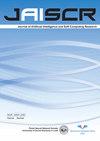Moving Object Detection for Complex Scenes by Merging BG Modeling and Deep Learning Method
IF 2.4
3区 计算机科学
Q2 COMPUTER SCIENCE, ARTIFICIAL INTELLIGENCE
Journal of Artificial Intelligence and Soft Computing Research
Pub Date : 2023-06-01
DOI:10.2478/jaiscr-2023-0012
引用次数: 0
Abstract
Abstract In recent years, many studies have attempted to use deep learning for moving object detection. Some research also combines object detection methods with traditional background modeling. However, this approach may run into some problems with parameter settings and weight imbalances. In order to solve the aforementioned problems, this paper proposes a new way to combine ViBe and Faster-RCNN for moving object detection. To be more specific, our approach is to confine the candidate boxes to only retain the area containing moving objects through traditional background modeling. Furthermore, in order to make the detection able to more accurately filter out the static object, the probability of each region proposal then being retained. In this paper, we compare four famous methods, namely GMM and ViBe for the traditional methods, and DeepBS and SFEN for the deep learning-based methods. The result of the experiment shows that the proposed method has the best overall performance score among all methods. The proposed method is also robust to the dynamic background and environmental changes and is able to separate stationary objects from moving objects. Especially the overall F-measure with the CDNET 2014 dataset (like in the dynamic background and intermittent object motion cases) was 0,8572.融合BG建模和深度学习方法的复杂场景运动目标检测
近年来,许多研究尝试将深度学习用于运动目标检测。一些研究还将目标检测方法与传统背景建模相结合。然而,这种方法可能会遇到一些参数设置和权重不平衡的问题。为了解决上述问题,本文提出了一种结合ViBe和Faster-RCNN进行运动目标检测的新方法。更具体地说,我们的方法是通过传统的背景建模将候选框限制为仅保留包含移动物体的区域。此外,为了使检测能够更准确地过滤出静态目标,保留每个区域建议的概率。在本文中,我们比较了四种著名的方法,即传统方法中的GMM和ViBe,以及基于深度学习的方法中的DeepBS和SFEN。实验结果表明,该方法在所有方法中具有最佳的综合性能分数。该方法对动态背景和环境变化具有较强的鲁棒性,能够将静止目标与运动目标分离开来。特别是CDNET 2014数据集的总体F-measure(如动态背景和间歇物体运动情况)为0,8572。
本文章由计算机程序翻译,如有差异,请以英文原文为准。
求助全文
约1分钟内获得全文
求助全文
来源期刊

Journal of Artificial Intelligence and Soft Computing Research
COMPUTER SCIENCE, ARTIFICIAL INTELLIGENCE-
CiteScore
7.00
自引率
25.00%
发文量
10
审稿时长
24 weeks
期刊介绍:
Journal of Artificial Intelligence and Soft Computing Research (available also at Sciendo (De Gruyter)) is a dynamically developing international journal focused on the latest scientific results and methods constituting traditional artificial intelligence methods and soft computing techniques. Our goal is to bring together scientists representing both approaches and various research communities.
 求助内容:
求助内容: 应助结果提醒方式:
应助结果提醒方式:


